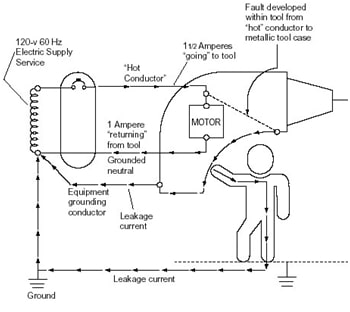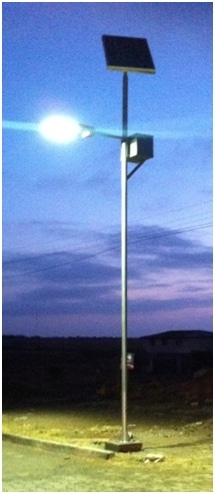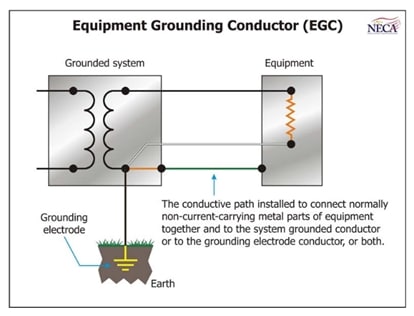
His name is Pablo, and he wants to tell you his bad experiences concerning grounding.
Share your experiences too, send us a mail!
“Throughout my experience in housing construction as well as in the installation of raceways in existing buildings I have met with incorrect definitions concerning grounding with ground rods.
Among the myths that I have heard from technicians and customers I can mention:
- If there is a short circuit then energy will go earth
- Electricity always “seeks” the least resistance path so surely will go ground
- No matter how, but all equipment and circuits must be grounded
- Any structure must have a ground rod
Although there are more myths we will discuss those. Electrical circuits theory tells us that the current always seeks to return to the source and do it for all the paths it finds not only the earth, both under normal conditions and in shorts.
In Figure 1 we can see the current flow as some people believe that happen on equipment with grounding rod subjected to a ground fault. In figure 2 we can see that in case of a fault there are 3 paths for current returns which may be more or less depending each case.

IMG Figure 1. What many people believe

Figure 2. The real paths
According the NEC “The earth has a role in the electrical grounding circuit, but it is not the role of facilitating overcurrent device operation” and therefore the protection against electrocution. At this point I must clarify that the article focuses on the safety of people and left aside the technical reasons for the grounding.
On the other hand I have found numerous cases where are installed grounding rods (not connected each other) in lighting poles, billboards, motors and other equipment, but what happen with that?
Suppose we have an isolated pole with a ground rod. In case of insulation failure to ground the current would go earth but certainly creating a potential gradient which cause a step voltage and touch voltage high enough to create a severe risk of electrocution.
So how can we correct these errors?

The equipment grounding conductor is the proper way to provide the effective ground fault current path to allow proper performance of overcurrent protection devices.
The earthing rod should only be placed according to the systems approved by IEC or other organization, particularly the TN-S and not to place rods that can cause problems instead of benefits.
But what is an effective ground fault current path? It is meant to be permanent, with the aim of having low impedance and be able to carry ground fault current to the grounded conductor (neutral) at power supply.
In figure 3 from NECA we can see the equipment grounding conductor that allows the effective ground-fault current path, is important to realize that the grounding rod is located at a single point and not connected directly to the equipment enclosure so it´s a bonding conductor.

Figure 3. Equipment grounding conductor
Finally, how the EGC help to prevent the risk of electrocution? In the event of a ground fault, high fault current for a short time allows the action of overcurrent devices, a ground rod near the enclosure would have almost or no effect due to the high resistance on the circuit.

Figure 4. Overcurrent device operation
In conclusion we can say that the proper way to protect a person is opening the supply circuit very quickly and not as numerous technicians and people believe to divert the fault current to earth through a ground rod.
Thank you for yout attention,
Pablo.
Very interesting Pablo and congrats on your very first article for the community! What do you all think about it? Did you have bad experiences concerning grounding too? Share it with us!

Can you write about the GFCI breakers and the risk of equipment without this protection or without an efective PE conductor?
Thanks